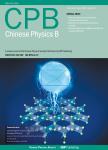Multidimensional images and aberrations in STEM
作者机构:Center for Nanophase Materials Sciences Oak Ridge National Laboratory
出 版 物:《Chinese Physics B》 (中国物理B)
年 卷 期:2024年第09期
页 面:72-78页
核心收录:
学科分类:08[工学] 080401[工学-精密仪器及机械] 080203[工学-机械设计及理论] 0804[工学-仪器科学与技术] 0802[工学-机械工程] 0803[工学-光学工程]
基 金:supported by the U.S. Department of Energy, Office of Basic Energy Sciences (DOE-BES), Division of Materials Sciences and Engineering under contract ERKCS89 support for 4D-STEM performed as part of user proposal at the Center for Nanophase Materials Sciences (CNMS), which is a US Department of Energy, Office of Science, User Facility Microscopy performed using instrumentation within ORNL’s Materials Characterization Core provided by UTBattelle, LLC, under Contract No. DE-AC05-00OR22725 with the DOE sponsored by the Laboratory Directed Research and Development Program of Oak Ridge National Laboratory, managed by UT-Battelle, LLC, for the U.S. Department of Energy
摘 要:Recent advances in scanning transmission electron microscopy(STEM) have led to increased development of multidimensional STEM imaging modalities and novel image reconstruction methods. This interest arises because the main electron lens in a modern transmission electron microscope usually has a diffraction-space information limit that is significantly better than the real-space resolution of the same lens. This state-of-affairs is sometimes shared by other scattering methods in modern physics and contributes to a broader excitement surrounding multidimensional techniques that scan a probe while recording diffraction-space images, such as ptychography and scanning nano-beam diffraction. However, the contrasting resolution in the two spaces raises the question as to what is limiting their effective performance. Here, we examine this paradox by considering the effects of aberrations in both image and diffraction planes, and likewise separate the contributions of pre-and post-sample aberrations. This consideration provides insight into aberration-measurement techniques and might also indicate improvements for super-resolution techniques.



